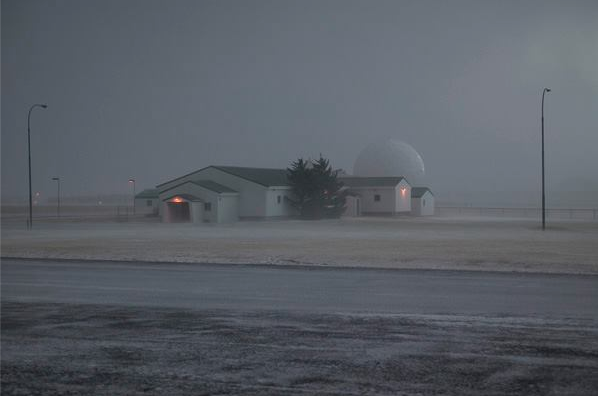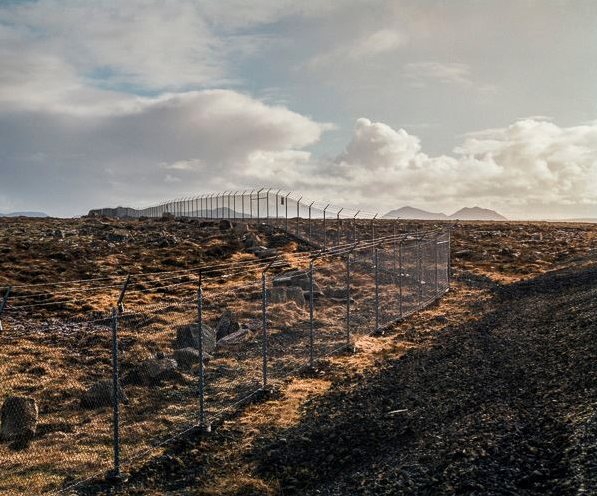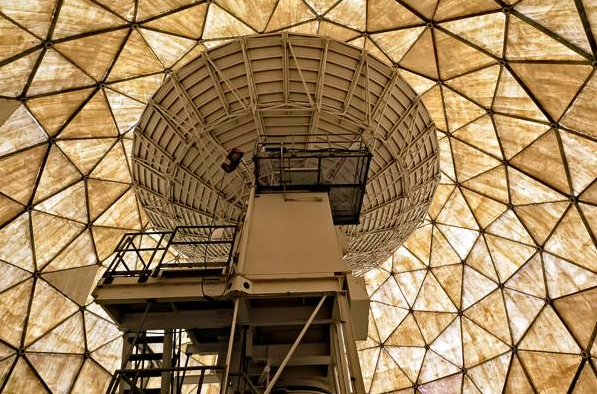Photos by Bragi Þór Jósefsson
In 2006, shortly after the US Military closed down its Keflavík Naval Air Station, located on Iceland’s southwest corner, photographer Bragi Þór Jósefsson visited the abandoned base to record the remaining structures.
Bragi’s personal project became an exhibition, Iceland Defense Force, that’s been widely displayed in Iceland and is now on show in Umbrella Gallery in New York City (317 E 9th St Ste 2, New York, 10003, umbrellaarts.com).
The Keflavík Naval Air Station was built by the US Military during WWII. The first US troops after WWII were stationed at the base in 1951, and the US maintained a large presence there until its closing on 8 September 2006.
 Ghost town
Ghost townWhen Bragi visited, the station, with all its buildings and structures, had been presented to the Icelandic authorities. It was a ghost town caught in the gap between its old role as a naval base and unwritten future. His environmental photographic study records this uncertainty and documents an important phase, both in the history of Iceland and the US Military.
Bragi graduated in photography from the Rochester Institute of Technology in the United States in 1987 and has since then been working as professional photographer.
 Long and dark winters
Long and dark winters  Fenced in
Fenced in
Is the US Navy returning?
Currently the Keflavík Airbase is being used by planes from the US and other NATO members (Iceland is a member nation). As Iceland does not have an army or an air force NATO allies periodically deploy fighter aircrafts to provide air policing. The plane crews are only a small fraction of the thousands of US servicemen that used to by stationed at Keflavík. The condos that they used to live in with their families have now been turned into a school campus, a hotel and other civilian facilities.
As we have previously reported the US is considering re-stationing American troops in Iceland with US officials having held informal talks with the Icelandic government.
The US Navy requested funds on the 2017 US military budget for the upgrading of an aircraft hangar in Keflavík Airport, which served as a US Naval base until 2006. The upgrade would allow the hangar to house patrol planes hunting for Russian submarines in the North Atlantic.
Keflavík played a key role during the Cold War
The Keflavík Naval Air Station played an important role during the Cold War, allowing the US to monitor Soviet activities in the North Atlantic. The base played a key role in patrolling the GIUK gap, Greenland-Iceland-UK, through which all Soviet long range aircraft or submarines had to pass before entering the Atlantic.
US soldiers first came to Iceland in 1941, before the United States declared war on Germany and Japan, and later constructed the headquarters for their military activity at this barren location on Reykjanes peninsula, about a 40 minutes drive away from the capital.
Photos by Bragi Þór Jósefsson
In 2006, shortly after the US Military closed down its Keflavík Naval Air Station, located on Iceland’s southwest corner, photographer Bragi Þór Jósefsson visited the abandoned base to record the remaining structures.
Bragi’s personal project became an exhibition, Iceland Defense Force, that’s been widely displayed in Iceland and is now on show in Umbrella Gallery in New York City (317 E 9th St Ste 2, New York, 10003, umbrellaarts.com).
The Keflavík Naval Air Station was built by the US Military during WWII. The first US troops after WWII were stationed at the base in 1951, and the US maintained a large presence there until its closing on 8 September 2006.
 Ghost town
Ghost townWhen Bragi visited, the station, with all its buildings and structures, had been presented to the Icelandic authorities. It was a ghost town caught in the gap between its old role as a naval base and unwritten future. His environmental photographic study records this uncertainty and documents an important phase, both in the history of Iceland and the US Military.
Bragi graduated in photography from the Rochester Institute of Technology in the United States in 1987 and has since then been working as professional photographer.
 Long and dark winters
Long and dark winters  Fenced in
Fenced in
Is the US Navy returning?
Currently the Keflavík Airbase is being used by planes from the US and other NATO members (Iceland is a member nation). As Iceland does not have an army or an air force NATO allies periodically deploy fighter aircrafts to provide air policing. The plane crews are only a small fraction of the thousands of US servicemen that used to by stationed at Keflavík. The condos that they used to live in with their families have now been turned into a school campus, a hotel and other civilian facilities.
As we have previously reported the US is considering re-stationing American troops in Iceland with US officials having held informal talks with the Icelandic government.
The US Navy requested funds on the 2017 US military budget for the upgrading of an aircraft hangar in Keflavík Airport, which served as a US Naval base until 2006. The upgrade would allow the hangar to house patrol planes hunting for Russian submarines in the North Atlantic.
Keflavík played a key role during the Cold War
The Keflavík Naval Air Station played an important role during the Cold War, allowing the US to monitor Soviet activities in the North Atlantic. The base played a key role in patrolling the GIUK gap, Greenland-Iceland-UK, through which all Soviet long range aircraft or submarines had to pass before entering the Atlantic.
US soldiers first came to Iceland in 1941, before the United States declared war on Germany and Japan, and later constructed the headquarters for their military activity at this barren location on Reykjanes peninsula, about a 40 minutes drive away from the capital.







